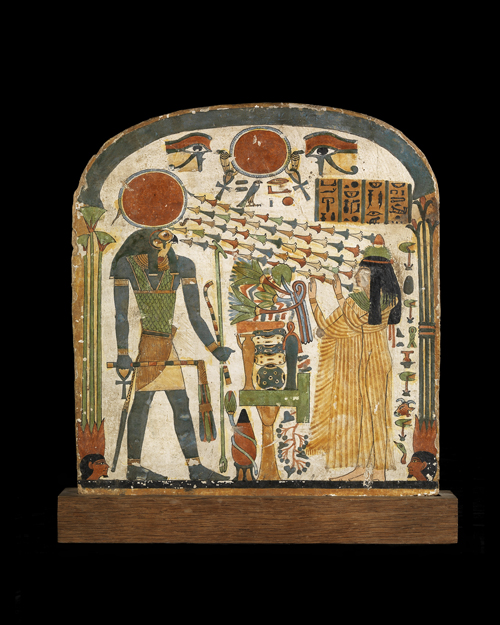
© 2008 Musée du Louvre / Georges Poncet
Uncertain provenance, probably region of Thebes
22nd – 25th dynasties, c. 850-690 BC
Plastered and painted wood
H.: 31 cm; W.: 29 cm; D.: 2.6 cm
Department of Egyptian Antiquities, Musée du Louvre
(E 52)
Starting in the first millennium, little stelae of brightly painted wood on which the deceased was depicted worshiping a deity—usually one of the forms taken by the sun—appeared among funerary items found in tombs. Lady Taperet, dressed in an elegant pleated gown is shown (on one side) praying to the falcon-headed god Re-Horakhty, crowned by a solar disk whose beams are lotus flowers; on the other side she is shown before Atum, wearing the double crown. These two deities symbolized the sun at its zenith and upon setting. The hieroglyphs arranged above Taperet in retrograde manner exhort the gods to accord the deceased all the offerings needed for her to survive in the Beyond. An inscription painted on the edge invokes Isis, Nephthys, Sokar, and Hathor. In the upper curve of one side, the universe is represented by the hieroglyph for the sky held up by the heraldic plants of Upper and Lower Egypt, the papyrus and the lotus. On the other side, the sky is represented by the curving body of the goddess Nut, painted a star-studded midnight blue, who swallowed the sun each evening and gave birth to it each morning. These scenes of sun worship convey the desire of the deceased to eternally accompany the god Re on his nocturnal journey, thus enjoying rebirth with him every morning.